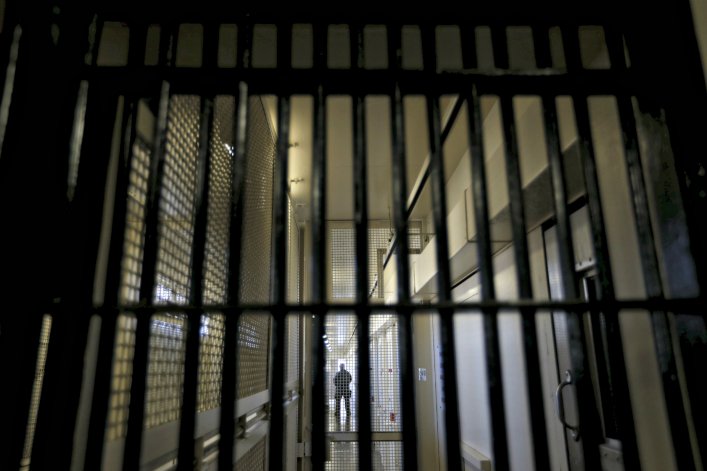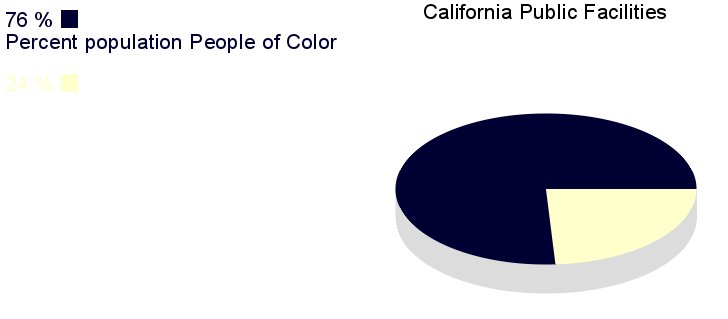
The Justice Department announced today that the United States will stop using for-profit prisons. The decision comes just a week after a report revealed that private prisons are less cost-effective and less safe than public prisons.
For those of us committed to fighting America’s “carceral state” — where nearly 1 in every 100 Americans are in jail — this is an important step in the right direction. Private prisons — where roughly 12% of all American prisoners are held — accrue a disproportionately high number of safety and security incidents each year compared to their public counterparts, in part because regulatory oversight of the day-to-day goings-on in these prisons is minimal.
People of colour are vastly overrepresented in our nation’s prison population. But, studies also show that people of colour — defined as “Black, American Indian or Alaska Native, Asian, Native Hawaiian or Pacific Islander, and non-white Hispanic or Latino” are even more overrepresented in our nation’s for-profit prisons. In California, where for-profit prisons picked up additional inmates after the state faced overcrowding of its public facilities, 89% of prisoners in a private facility are non-White, compared to 76% in a public prison.

Most state and federal agencies report that the incarceration rate is, on the whole, low for the AAPI population: despite representing 6% of the population, AAPIs are only 1.5% of the nation’s prison population , according to the Federal Bureau of Prisons. Yet these data are compromised by the fact that most data collection departments for state and federal prisons collapse AAPIs with Native Americans and other prisoners into a broad “Other” racial category. Additional disaggregation of AAPI data by ethnic self-identification is virtually unheard of, meaning the impact of mass incarceration on the AAPI community is largely unknown.

Still, in the limited cases where numbers for the AAPI prison population are available, we see an alarming trend.
Between 1990 and 2004, the nationwide Asian American and Pacific Islander prisoner propulation grew by 30% (and another report suggests that incarceration rates for AAPIs may have as much as quadrupled in that time frame). In California, the Asian American & Pacific Islander prison population more than doubled between 1990 and 2000, according to the Asian Prisoner Support Committee. The APSC further reports that Southeast Asian Americans and Pacific Islanders are disproportionately overrepresented in California’s prison system.
In Oakland, CA, several API groups had very high arrest rates, including Samoans (who had the highest arrest rate of any racial/ethnic group in the city, 140 per 1,000), Cambodians (63 per 1,000), Laotians (52 per 1,000) and Vietnamese (28 per 1,000). In the California prison system, APIs are officially categorized as “Others,” a fitting description for a population that is so often overlooked.
Earlier this year, Breathin’: The Eddy Zheng Story spotlighted the plight of AAPI prisoners with its compelling profile of Eddy Zheng, who spent 20 years in San Quentin as the prison’s youngest inmate.
The federal government’s decision today to halt its reliance on for-profit prisons may serve as an important signal to states like California, where non-White people make up more than three-quarters of the state’s prison population and where a still-invisible population of incarcerated AAPIs struggle for survival. We can only hope that states will soon follow the federal government’s lead.
Private prisons exacerbate profiteering off of the lives of those convicted by our criminal justice system — people who are more often than not poor and non-White. Their for-profit motive reinforces an existing system that prioritizes punishment (and resulting recidivism) of the guilty, and eschews restorative justice approaches that might seek truth and reconciliation for victims and rehabilitation of offenders.
Today’s announcement that the federal government will stop using private prisons will not solve the myriad problems caused by America’s growing mass incarceration state; but, it’s certainly a start.
Update (8/19/2016): Despite yesterday’s announcement, one area where the federal government has not made any moves to end its relationship with private prisons is with regard to immigration. Currently, 62% of Immigration and Customs Enforcement (ICE) detention facilities — where deportees are incarcerated for weeks or even months under the same unsafe for-profit prison conditions discussed above — are run by private companies. The vast majority of the 369,000 deported immigrants are people of colour, and over 1 million of the nation’s undocumented immigrants are Asian. The Department of Homeland Security’s continued reliance on for-profit ICE detention facilities will continue to have an enormous impact on Asians and other immigrants of colour.
Please sign this petition to demand that the Department of Homeland Security follow the Justice Department’s lead and end its relationship with for-profit prisons.
